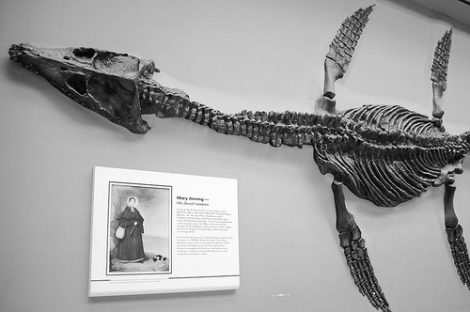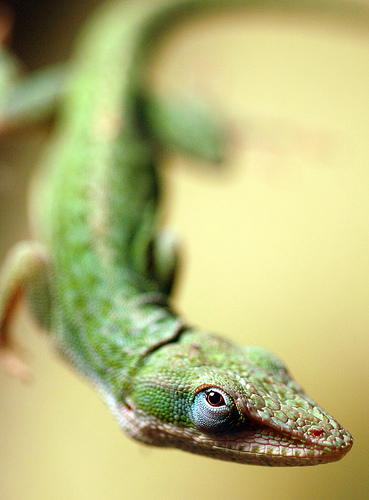
 )
)This week’s exploration of Christians’ history in the sciences brings us to Mary Anning. Anning was a 19th century fossil collector whose work would form the foundation of paleontology. She found some of the first ichthyosaur, plesiosaur and pterosaur skeletons.
Most striking to me is that she did so largely as an outsider. She had a passion for science and pursued her investigations without the kind of institutional support we associate with modern science. We may need more Mary Annings going forward as that kind of support is available to a smaller proportion of qualified scientists than in recent years.
I was hoping to find some quotes from Anning or other indication of how she thought about her scientific pursuits and her Christian faith, but I’ve come up empty so far. She was part of a Congregational community in England, a dissenting movement from the established Anglican church. In later life, she would join an Anglican congregation when her first church went into decline. Ironically, her fossil discoveries and others’ finds may have contributed to reduced church attendance more broadly, if not at that specific congregation. The natural history revealed by fossils raised questions about how to interpret Genesis and from there wider Christian theology. Mary Anning herself seems to have retained her Christian beliefs, although apparently without recording how she answered those questions.
Anning’s fossil finds like the ichthyosaur were some of the earliest-discovered evidence of organisms from the past that were clearly distinct from living organisms. This raised the possibility of species having gone extinct in the distant past, beyond human memory and record. Unfortunately, we have since had the opportunity to witness the extinction of species first hand, but the idea of extinction itself was relatively new in Anning’s day.

 )
)Fossils also provided some of the first indications that new species might diverge from existing ones. While the fossil record still has the most extensive examples of divergence, speciation is a also process we have been able to study more directly. For example, Harvard biologists are studying what may be divergence in process among lizards from the Bahamas. Last year, a new species of finch was reported as having developed in just two generations. There’s still a lot to learn about how, when and why two species diverge; even the definition of species as interbreeding populations may prove to be inadequate. Thus it is exciting to be able to follow it as it happens. And where there are lots of questions to answer and lots of observations to make, there are likely opportunities for citizen scientists to contribute.
Last week’s science communication chat went fairly well, I think. In some ways, we were just getting started when it was time to wrap up. Since there’s more to talk about, we’re going to do precisely that tonight. We’ll take up some of the questions that were asked last week, plus I want to hear from you what science excites you enough that you want to share it, and what ideas you have about doing so. We’ll get started tonight at 7:30pm Eastern via this Google Hangout.
Also, don’t forget that in two weeks (February 7), I’ll be starting another blog book club series on When Science and Christianity Meet in case you want to read the book along with me.
Andy has worn many hats in his life. He knows this is a dreadfully clichéd notion, but since it is also literally true he uses it anyway. Among his current metaphorical hats: husband of one wife, father of two teenagers, reader of science fiction and science fact, enthusiast of contemporary symphonic music, and chief science officer. Previous metaphorical hats include: comp bio postdoc, molecular biology grad student, InterVarsity chapter president (that one came with a literal hat), music store clerk, house painter, and mosquito trapper. Among his more unique literal hats: British bobby, captain’s hats (of varying levels of authenticity) of several specific vessels, a deerstalker from 221B Baker St, and a railroad engineer’s cap. His monthly Science in Review is drawn from his weekly Science Corner posts — Wednesdays, 8am (Eastern) on the Emerging Scholars Network Blog. His book Faith across the Multiverse is available from Hendrickson.

I’d be curious as to the criteria that calls this a new species, as opposed to a variation within a species. I’m not a scientist, which is probably why I ask this question as I do.
I’m specifically referring to the Galapagos finch article referenced in article.
David – This is a great question. The short answer is that the new population is considered a new species because it is reproductively isolated, meaning that the finches within that population only reproduce with other finches of the same population. The population is defined in terms of distinctive characteristics such as song and size.
This is the traditional definition of a species — a reproductively isolated population — and though actually applying it has complications, it is still used widely to define species of living organisms.
It’s probably also worth noting that this kind of divergence is not what most people have in mind when they think about a new species emerging. They are still finches; what’s the big deal? One issue is that our common naming conventions do not line up well with classification. For some animals, the common name corresponds to a species; cows fall into this category. In other cases, the common name captures a whole genus or family (apes). And sometimes common names don’t really line up with actual classifications at all. Finches might be considered in that category. There is an entire family of birds, consisting of over 200 species, called finches. But then other birds outside that family are also called finches or have finch in their name. Darwin’s finches are the latter. They are not ‘true’ finches at all. So observing that two species still share a common name doesn’t really tell you much about their biology or how closely they are related.
Another issue is that species aren’t always as visually different as we expect. Many of us are familiar with the great variety of dog breeds which are still all considered the same species. How is it that chihuahuas and Irish Wolfhounds are the same species, but these two birds that look pretty much the same are considered different species? Mainly it’s because dogs are a special case. On the one hand, humans have been selective breeding dogs to generate exaggerated differences. On the other hand, we’ve been moving dogs all over the world and encouraging them to interbreed or at least making it possible for them to. The end result is a population with high genetic diversity and high reproductive mixing, a combination that is hard to get under the circumstances typical for most animals.
Does that help clarify the situation? If not, I’d be happy to try further if you have more questions.
Helpful and thorough. A lay person would not read the headline using that definition. At least I didn’t.